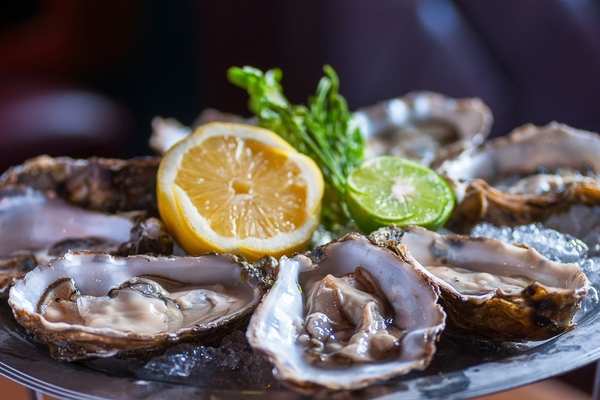Ooh, la, la, oyster fans, your day is here, because August 5th is National Oyster Day! In honor of the aphrodisiac mollusk (and there have been studies, so yeah, the rumor’s true!), here are fun facts, history, and serving/eating tips to honor the special foodie delight. (And by the way, it’s also National IPA Day, so think about THAT stellar pairing!)
First, some Oysters 101
- There are over 100 species of true oysters and traditionally they are named after the body of water or bay in which they are grown and are known by a myriad of names such as Wellfleets, Kumamoto and La Saint Simon.
- The mollusks take on the characteristics of the water in which they live. This impacts their flavor and texture so that tastes can range from sweet to salty to buttery and metallic, with texture running firm to soft and gooey to chewy. Some oysters have hints of seaweed, mineral flavor and hints of melon and mushrooms.
- The main difference between East Coat and West Coast oysters is East Coast ones are smaller, milder in flavor and saltier, while West Coast varieties are creamy and sweet.
- The largest oyster-producing body of water is located in Chesapeake Bay on the east coast of the U.S. Large beds of edible oysters are also found in Japan and Australia.
And Now, for your Oyster History
- Archeologists tell us humans have been eating oysters since the dawn of humanity. Oyster farming and cultivation can be traced back to Roman times in France and England.
- Oysters actually helped build New York City’s restaurant trade as the fish were so abundant in the city’s harbour during the early 1800s, when their vast supply made them a cheap food source for the working class. By the end of that century, six million oysters could be seen on barges tied up along the city’s waterfront, making New York the largest producer then of oysters worldwide.
- But rising demand exhausted the city’s oyster beds prompting the introduction of foreign oyster species. Sadly, this brought disease which destroyed most of the beds by the early 1900s. Their popularity hiked demand which saw prices soar. Ironically, what was once a working-class food transformed to its current status as a pricier delicacy.
Fun Facts about Oysters
- Nearly two billion pounds of these bivalve mollusks are eaten every year. From 1990 to 1995, Americans ate about fifty million pounds of oysters.
- As for finding a pearl in an oyster, that’s a rare find. Only one out of 10,000 oysters will produce a pearl. And thoseoysters aren’t bred for eating. Most of the pearls that are created by these mollusks begin with human intervention. Pieces of shells or beads are inserted inside an oyster. And the natural process goes from there. The oyster covers the foreign substance with layers of calcium and protein. In time, a pearl is produced.
- The reproductive organs of many oyster species contain both eggs and sperm. As a result, it is technically possible for an oyster to fertilize its own egg. Once the female is fertilized, they discharge millions of eggs into the water. The larvae develop in about six hours and swim around for about two to three weeks. After that, they settle on a bed and mature within a year.
Serving & Eating
- There are a million ways to serve and eat oysters. Oysters can be eaten on the half shell, raw, smoked, boiled, baked, fried, roasted, stewed, canned, pickled, steamed or broiled.
How you prepare your oysters can vary from simply opening the shell and eating the contents, including juice. Butter and salt are often added. - According to some oyster aficionados, there is no right or wrong way to eat an oyster. With your fork move the liquid-filled half shell to ensure the oyster is detached. Bring the shell to your mouth and slurp up the oyster from the wide end. Chew it once or twice before swallowing.
It’s a myth that oysters are supposed to slide down your throat without chomping into them first.
And Finally, are Oysters really an Aphrodisiac?
- When Aphrodite, the goddess of love, rose from the sea on an oyster shell that pretty much clinched the notion that oysters would be forever associated with love and libido.
- Recently, a team of American and Italian researchers found some truth in the ancient Greek myth. After analyzing oysters, the researchers concluded they were rich in rare amino acids that trigger increased levels of sex hormones.
—
Photo Credit: Suporn Thawornnithi / Shutterstock.com
